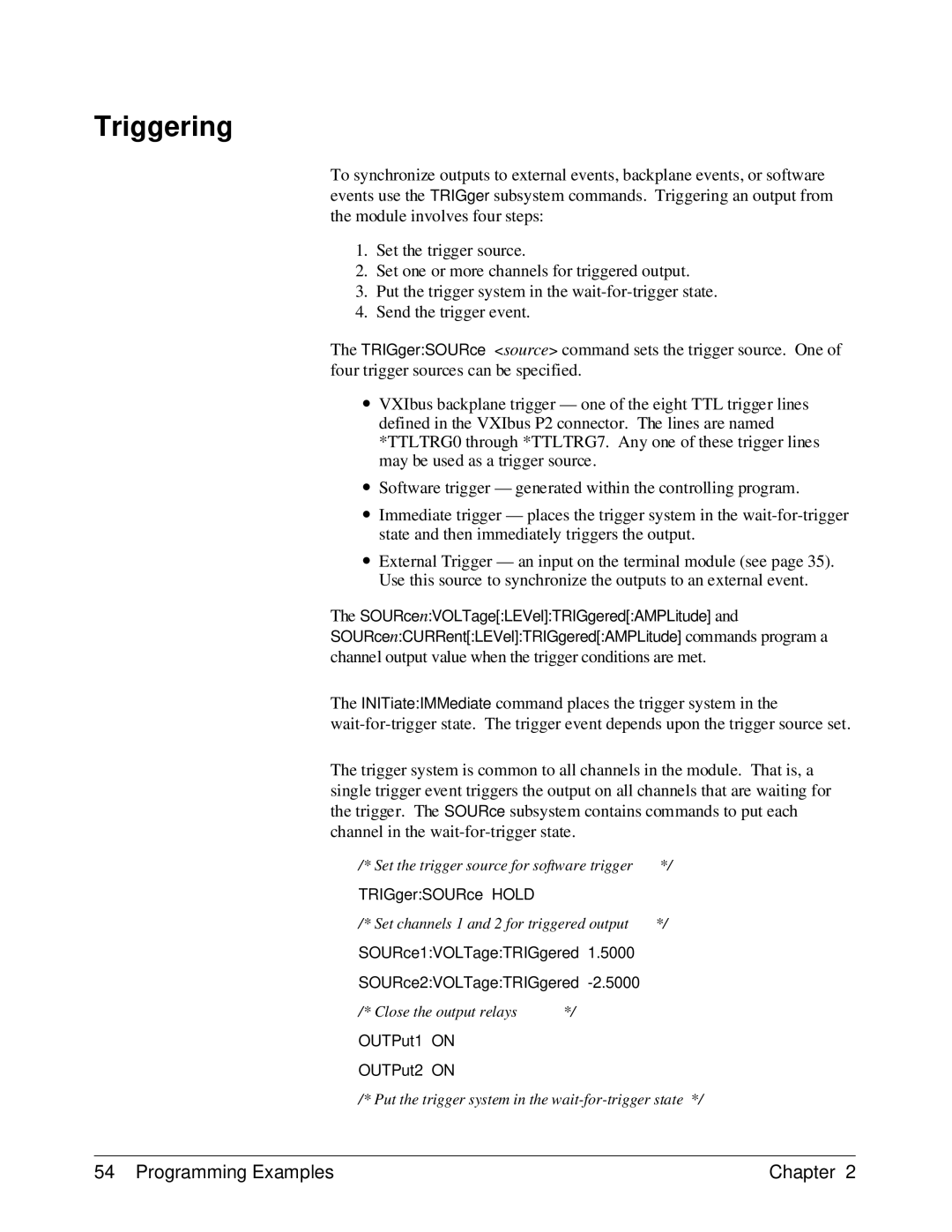Triggering
To synchronize outputs to external events, backplane events, or software events use the TRIGger subsystem commands. Triggering an output from the module involves four steps:
1.Set the trigger source.
2.Set one or more channels for triggered output.
3.Put the trigger system in the
4.Send the trigger event.
The TRIGger:SOURce <source> command sets the trigger source. One of four trigger sources can be specified.
∙VXIbus backplane trigger — one of the eight TTL trigger lines defined in the VXIbus P2 connector. The lines are named *TTLTRG0 through *TTLTRG7. Any one of these trigger lines may be used as a trigger source.
∙Software trigger — generated within the controlling program.
∙Immediate trigger — places the trigger system in the
∙External Trigger — an input on the terminal module (see page 35). Use this source to synchronize the outputs to an external event.
The SOURcen:VOLTage[:LEVel]:TRIGgered[:AMPLitude] and
SOURcen:CURRent[:LEVel]:TRIGgered[:AMPLitude] commands program a channel output value when the trigger conditions are met.
The INITiate:IMMediate command places the trigger system in the
The trigger system is common to all channels in the module. That is, a single trigger event triggers the output on all channels that are waiting for the trigger. The SOURce subsystem contains commands to put each channel in the
/* Set the trigger source for software trigger | */ | |
TRIGger:SOURce HOLD |
|
|
/* Set channels 1 and 2 for triggered output | */ | |
SOURce1:VOLTage:TRIGgered 1.5000 |
| |
SOURce2:VOLTage:TRIGgered |
| |
/* Close the output relays | */ |
|
OUTPut1 ON |
|
|
OUTPut2 ON |
|
|
/* Put the trigger system in the
54 Programming Examples | Chapter 2 |
